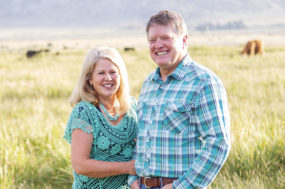The Water Quality Program for Agriculture (WQPA) was an ongoing program in Idaho with annual appropriation of general fund dollars, up until 2011. “On the heels of the recession at that time, the legislature pulled the funding,” says Delwyne Trefz, administrator, Idaho Soil and Water Conservation Commission. “It was basically a non-functioning program until the 2022 session of the Idaho legislature appropriated 5 million dollars for us to use for the WQPA program and the governor signed it into law.”
This program had been highly popular in earlier years. “Primarily, the money goes out through the conservation districts, made available to the districts that submit project proposals to us at the commission. We review the proposals and make funding decisions,” he says.
“What happened last year was phenomenal. Even though the program had been dead for more than 10 years, as soon as the governor signed that bill into law the end of March, I let our field staff know we had the funding and we could meet with the districts and generate project ideas, put together proposals and get them submitted.”
Within 10 weeks, they received 93 proposals, asking for a total of $12 million of WQPA funding, which could be combined with other funding sources to accomplish over $30 million of conservation across the state of Idaho. Proposals come from conservation districts that were aware of landowners who wanted to do projects.
“We only had 5 million to spend, so we tried to prioritize and also make sure that every district that submitted at least one proposal would get at least one project funded. We were able to do that and ended up with 33 of the 50 districts submitting proposals. Some submitted multiple proposals, and a few got two projects funded, but every district that submitted a proposal was awarded funding for a project. The legislature gave us one fiscal year to do this, which for our state ends June 30, 2023,” he says.
It was a phenomenal response from the conservation districts to identify that many “shovel-ready” projects. The proposals had to be something that could be put together quickly. Funds were available not only for on-farm water quality issues or projects, but also to irrigation districts and canal companies for small infrastructure water quantity issues.
“When the governor’s revised budget for 2023 came out, 5 million dollars was recommended for WQPA again this year, so we are tickled that this program is still going. Our long-term goal is to have this become an ongoing appropriation again so we don’t have to ask for it every year, but for now we are excited for what we can do right now,” Trefz says. The fact that so many proposals were actually funded speaks to the efficiency and effectiveness of soil and water conservation districts as vehicles to get conservation out on the ground, in these collaborative efforts.
“Our agency has no regulatory function. Every project we facilitate is one that is entered into voluntarily by the landowner. And the 5 million we have committed to these projects will be combined with other funding to accomplish 18.5 million dollars’ worth of conservation. We feel it is a good bang for the state’s buck and we are honored to have a role in it.”
Carolyn Firth, agricultural program specialist with the Idaho Soil and Water Conservation Commission, says the nice thing about this program with the state is that it can work in combination with federal money. This can help farmers and ranchers a lot because some projects can be so expensive that the costs must be shared.
One farmer in Cassia County already had a contract with the Natural Resources Conservation Service (NRCS) to help pay for replacing a long, leaky, gravelly ditch with a pipeline and to replace wheel lines with pivots (to save water and halt runoff and leaching of nutrients from his fields into other water sources), but he didn’t think he’d be able to do it with just the federal money. With recent inflation, prices had gone up tremendously for the materials, sprinkler equipment, fuel, labor, etc. “We were able to provide some extra money, and he was so excited that he would now be able to go forward with those plans,” Firth says.
“We encourage soil conservation districts to look for projects that are ready to go,” Trefz says. “There is not a lot of turnaround time between when we find out that we have the money and to determine where we need to apply for it, get contracts written, etc.” The projects that are already looked at and in the planning stages are most likely to get funded.







